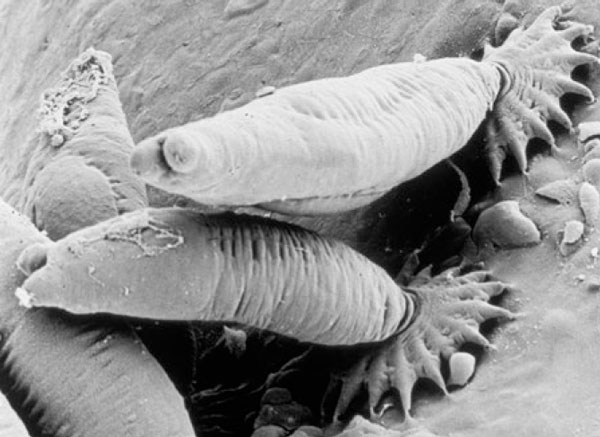Gyrodactylus salaris
The Gyrodactylus salaris (G. salaris) parasite poses a huge threat to Atlantic salmon in rivers where it has been introduced.

It has wiped out up to 98 % of salmon parr in some Norwegian rivers. According to a 2022 report, the Norwegian Authorities had spent more than NOK 1 billion (approx. £73 million) on research, monitoring and combating G. salaris and the work remains ongoing.
In response to the threat posed by the parasite, NASCO’s NEA has an agreed ‘Road Map to enhance information exchange and cooperation on monitoring, research and measures to prevent the spread of G. salaris and eradicate it if introduced’ and has established a Working Group on G. salaris which meets every three years. In addition, Commission members are asked to report annually to the Commission on progress on the recommendations contained within the Road Map.
During its 2023 Annual Meeting, the NEA considered the report of the most recent meeting of the Working Group on G. salaris, which was held in October 2022. The Commission agreed a number of revisions to the Road Map and the ‘Revised Road Map’ can be found here. The Commission also noted a number of best practice recommendations from the Working Group and encouraged the members of the Commission to disseminate them widely:
Best Practice Recommendations on Gyrodactylus salaris
At its 2023 Annual Meeting, NASCO’s North-East Atlantic Commission agreed a number of best practice recommendations on dealing with G. salaris as follows:
- any positive detections of Gyrodactylus salaris in an area previously free of the parasite must immediately be reported to the Competent Authorities of the jurisdiction and not be investigated through a non-designated laboratory. Samples should be available for investigation by the Competent Authority;
- salmon restoration programmes should consider the threat posed by Gyrodactylus salaris and undertake appropriate surveillance and mitigation measures;
- where possible, only 1+ or older juvenile salmon are used for sampling;
- and the use of chlorine be considered in the development of Contingency Plans as a potential eradication method if Gyrodactylus salaris becomes established. However, chlorine should not be considered as an initial treatment in response to an outbreak where fast action is necessary.
Further information on the parasite and NASCO’s response to the threat it poses can be found here.